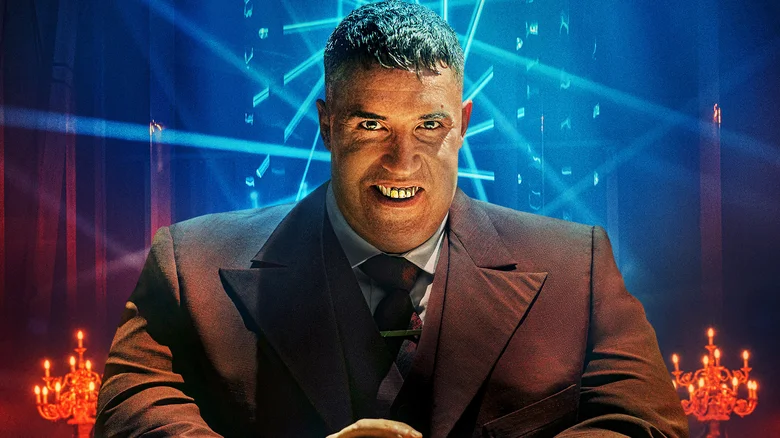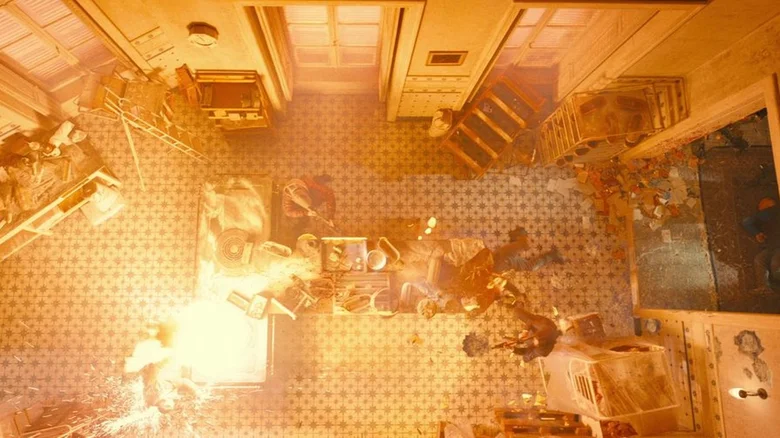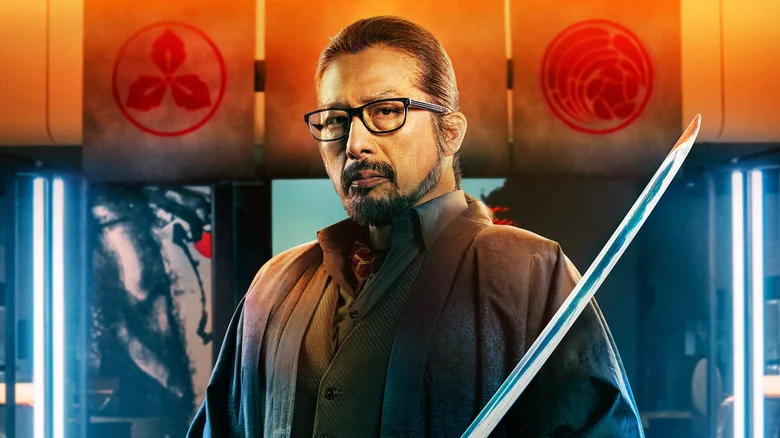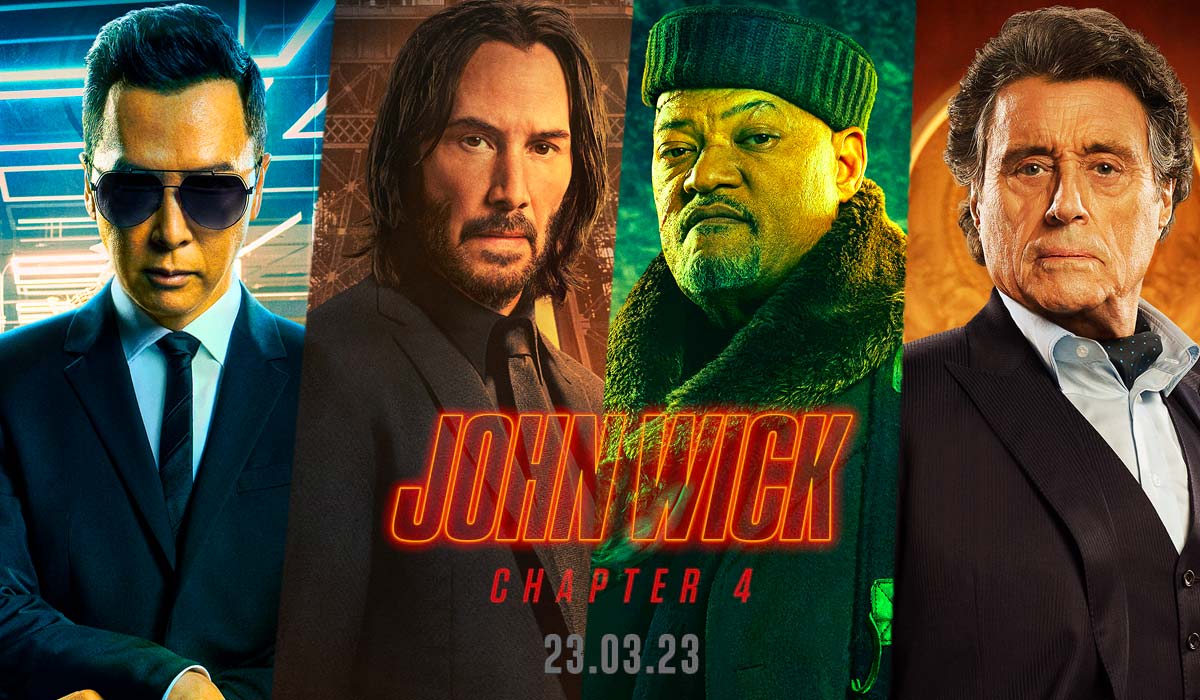Blogs
John Wick Chapter 4, Every Battle, From Worst to Best
There are spoilers for “John Wick Chapter 4” in the post that follows.
My father like to tell the following tale: When I was four years old, I was awakened by a loud thump and a jingling chain. I snuck downstairs to look, where I discovered my father punching a leather hanging bag while bathed in sweat. I said, “I want to do that, too,” without pausing. He said, “Alrighty, youngster,” even though it astonished him. That week, he signed me up for karate. Martial arts quickly grew to be our passion. We participated in regional competitions on Saturdays in crowded gyms. My father served as the referee as I competed in sparring. Before and after games, we would talk for hours about the results, debate tactics, and consider the risks of making sudden movements in the face of incoming kicks.
I’ve been learning martial arts for more than 20 years because I want to pay tribute to my late father and because my bones don’t recall life before I started. As a result, nothing makes me happier than watching an action movie featuring exciting, realistic, and difficult battle scenes. Fight choreography has different regulations than actual martial arts events. A boxer moving too swiftly prevents spectators from seeing what is happening. If they go too slowly, dramatic showdowns will unavoidably degenerate into camp.
Director Chad Stahelski has again set the bar for intense martial arts sequences with “John Wick: Chapter 4.” Store the firearms. I’m pulling out the scorecards to evaluate the movie’s big bouts based on four criteria: inventiveness, clarity, fluidity, and power, in honor of the Baba Yaga’s most recent adventure.
Director Chad Stahelski’s holistic vision for John Wick: Chapter 4

Before to donning my gloves and entering the ring, let’s first acknowledge Stahelski’s commitment to meticulously crafted action sequences. The “John Wick: Chapter 4” director methodically plans battle sequences months in advance with his entire crew. He has experience in stunt work and second-unit directing. He clarified to Deadline “What good does it do me if I spend $5 million on my stuntmen and 10 weeks of Keanu’s training if I don’t train the cameramen? Who do you believe fired it?”
According to Stahelski, the majority of action movie producers forgo hiring local stunt performers and camera crews during the rehearsal period, presumably to save money. In fact, it’s not unusual for a local stuntman to show up on location the day of filming without having seen the fight beforehand. Because it is expected that the action sequences will need to be repaired, the majority of the Marvel Cinematic Universe movies even pre-budget for reshoots. Contrarily, Stahelski, even though it costs a little more up front, ensures that the actors and crew are present for location scouting, training sessions, and logistical planning to ensure that the fight unfolds accurately the first time.
The effort shows on screen
According to Stahelski, “John Wick 4” employed approximately 200 stunt performers. Jeremy Arenas choreographed the action sequences, with help from “three additional riggers, three other choreographers, and two assistant stunt coordinators,” according to Deadline. Scott Rogers acted as the movie’s supervising stunt coordinator. Naturally, Stahelski also stepped in to direct a few moments himself.
To explain why this number is so remarkable, consider that action movies normally give credit to an average of 46 stunt performers. The number is somewhat higher for ensemble-driven urban action movies like “Avengers: Age of Ultron,” but it still serves as evidence of how many working stunt performers Stahelski used, and to excellent effect.
A different filmmaker might have chosen to simply give the appearance of crowds when shooting the movie. Action-packed television shows like “The Boys,” for instance, frequently digitize images by copying and pasting extra characters into the backdrop to give areas a more inhabited vibe. Another technique used by filmmakers to conceal how small the cast is to avoid wide-panel shots. not Stahelski though! Each of these fights is entertaining to watch in its own way. I’m here to play referee and decide what would actually happen in these expertly planned battles; even the most absurd ones feel grounded in reality.
Killa vs. John Wick

Creativity: 3/5. A tense opening, but a lot of repetitive moves.
Clarity: 5/5. Owned the entire club!
Power: 2/5. Are John Wick’s bones made of Adamantium?
Fluidity: 4/5. Killa’s spinning kicks!
The number of Scott Adkins movies that diehard martial arts movie fans have probably seen is beyond count. When battling John Wick, Adkins’ Killa mostly combines taekwon-do high-section kicks with judo throws despite having mastered a variety of martial arts (Keanu Reeves). That’s not necessarily a bad notion, given the character’s stature. Killa uses his size to his advantage and effortlessly defeats John’s judo and jiujitsu throws. Killa is a tank in terms of video games: He has an advantage over John because of his larger center of gravity. Killa can’t be readily knocked over by force alone.
Yeah, the fight between Killa and John is gloriously rough. Nobody other has pulled the Baba Yaga by the tie before! Nonetheless, Killa does a hopping side kick at one point, launching John into a cement wall. (Let’s not even bring up the head kick with the spinning wheel.) Taekwon-do side kicks, particularly those that hop and pivot, are risky. Your complete body weight effectively propels your foot forward thanks to the strength of your core, hips, and legs. Ribs will fracture. The action was clearly planned, but the kick was the final blow. I apologize, John; there was no way you ought to have abandoned that one.
Akira vs. Chidi

Creativity: 4/5. Using her bow as a block into a knee slide to a judo throw?! Icon.
Clarity: 4/5. Sleek and speedy!
Power: 3/5. Points deducted for more weapon-oriented hits.
Fluidity: 4/5. Did you see that kick into a split move?
The flexibility that Rina Sawayama possesses as a result of her training in dance and musical performance is Akira’s greatest asset. She doesn’t strike harder than Chidi (Marko Zaror) throughout their fight, and she moves a little too slowly, making it simpler for the enemy to catch her. Akira manages to escape thanks to her tenacity and cunning strategies (have a look at how she climbs up a body by stabbing it). She adapts, surprising people by wielding her bow as a shield and hook-like weapon, unlike the brawler.
Akira, who is battling Chidi, is aware of the disparity in strength and manages to hold her own by leveraging his momentum against him. Can’t use a judo throw to send the huge Chidi flying across the room? No issue! She will weave and dip so swiftly that finally she will wear him out. She also defeats similarly large opponents in Osaka’s Continental thanks to a deadly set of blades. Perhaps, some of Chidi’s songs need to have slowed Akira down more, but she has an unmistakable buoyancy.
John vs. an apartment building full of baddies

Creativity: 5/5. Might be the best top-down almost oner in film history.
Clarity: 3/5. Action happens very quickly, which is thrilling, it’s but overpacked.
Power: 4/5. Some of the film’s best hand-to-hand combat occurs amidst the gun-fu.
In a sense, this isn’t a direct confrontation with John Wick. Yet I can’t leave out this memorable battle since Stahelski essentially makes the structure into a character. While top-down shots in action movies are nothing new, I haven’t yet seen another one that develops into nearly a single-take scene, or “oner,” with a never-ending barrage of combat. Here, there are three digital stitches, as Stahelski explained to /Film. With the exception of the cutaway, the editing is so precise that you’ll think these are two separate videos that have been stitched together. This scene in “Chapter 4” of the “John Wick” movies feels the most like a love homage to “The Raid: Redemption,” with tense situations that lead to numerous one-on-one encounters, including one with Chidi. All that, plus a shotgun that doubles as a quasi-flame thrower!
There is a downside to the way the action is filmed, though. There is so much going on that the clarity suffers, despite the fact that it does look sick as heck. However, Stahelski’s method limits the amount of close-quarters battle you can really see, especially when it comes to counterattacks, in contrast to scenes in Gareth Evans’ movie that are similar. How someone avoids a blow is just as important to their fighting style as their choice of locks when it comes to both fighting styles and character development.
Shimazu vs. Caine

Creativity: 4/5. Technically precise, but par for the course for a short katana duel.
Clarity: 5/5. Spotless form and clear follow through of movement.
Power: 4/5. Katana fights are more about speed and the rotation of the hips.
Fluidity: 5/5. Makes the ballet look clunky!
Hiroyuki Sanada is one of the few active actors whose names are as closely associated with samurai films. A katana will nearly always make an appearance in a movie if you see him appear in the credits. Sanada, who received his training from the illustrious Sonny Chiba, is adept at transforming his knowledge of kendo, shorinji kempo, and kyokushin kaikan karate into drama. He gives Shimazu’s strikes in this instance poise, steadiness, and a magnificent quality. His movements are precise, and he favors retaliation over direct assault. As every skilled combatant, he is aware that every movement is a waste of energy. A dialogue between the two men that is punctuated by each stroke develops when set against Caine’s (Donnie Yen) lightning-quick hands. It is stunningly engrossing.
The katana battle did not conclude as swiftly as it did, which is my sole quibble. Naturally, it makes sense in the context of the movie, but I don’t think Caine would have survived without any edits. The drawback of a forceful attack is that it makes you more vulnerable to a kick, or in this case, a sword. Caine ought to have escaped with at least one serious wound.
Donnie vs. Marchese’s henchmen

Creativity: 5/5. The bell sounds are ingenious.
Clarity: 4/5. At times, the camera moves away a little too quickly from landing strikes.
Power: 4/5. Caine’s style is more about multiple speedy attacks than a single mighty blow.
Fluidity: 5/5. The movements connect seamlessly.
The Donnie Yen fandom hour is about to begin, and I’m not sorry! It’s a big deal that the “Ip Man” actor got the lead role in the “John Wick” series. Hollywood has been pounding on the door of Yen, the son of Wushu grandmaster Bow Sim Mark, for decades, but so far he has mostly played cliched characters like Îmwe in “Rogue One” or, as he put it to Prestige, “another stereotypical Chinese martial-arts man.” Nonetheless, Yen collaborated with Stahelski to create his persona for “John Wick: Chapter 4” as cool as Chow Un-fat. In order to “reclaim” Caine’s name in honor of Bruce Lee, who was infamously passed over for the part of Kwai Chang Caine on the 1970s television series “Kung Fu,” Yen even changed Caine’s name.
Yen makes the entrance of a lifetime in “John Wick: Chapter 4”, effortlessly switching between high-section kicks, staff blocks, and several opportunities to display the quick hands that have made him a Hong Kong action cinema legend. He uses movement-activated bells to map out the Osaka Continental. He locates items in space using his wrist, demonstrating how his awareness of the surroundings outweighs trigger-happy fingertips. Caine’s swagger and deft feet give me hope that he can dance around bullets, though I have my doubts about how successfully he could avoid the Marchese’s firing squad. The best is still to come, though!
John, Caine, and the 222 steps
Creativity: 3/5
Clarity: 5/5
Power: 5/5
Fluidity: 5/5
Action set pieces are frequently transformed into poignant symbolic moments by Stahelski and his team. Indeed, seeing adversaries repeatedly knock John down 222 steps is a fantastic blend of slapstick humor and wrath fuel for John, but it also exemplifies the core themes of “John Wick: Chapter 4”. When Caine shows up to assist John after he stumbles for the nth time, the event has genuine narrative weight because these buddies come together to make sure that whatever happens to John Wick after that is honorable.
The fight that follows is uphill (literally) to the conclusion. Once more, Yen excels. Caine is exceptionally skilled at deflecting and blocking incoming assaults using tools like swords. (His use of a pencil as a weapon also makes me think of “John Wick: Chapter 2”) I’m awarding this sequence bonus marks for how well-lit the pictures are, despite the fact that the adversaries lurking in the background to attack make it all feel a little too much like a video game. Both Caine’s hands and Chidi’s stunning roundhouse kick to the head are visible to me. Action sequences like this one are enhanced by clarity. If battles are conversations, then skipping a counterattack is equivalent to neglecting an important line of speech. If you can follow all that happens, the scene will only work.
John vs. Caine at the Osaka Continental

Creativity: 5/5
Clarity: 5/5
Power: 5/5
Fluidity: 5/5
Indeed, I was speechless throughout this scene. It’s exciting to see Yen totally immerse himself in the sleek gun-fu of “John Wick,” as he is known for his quadruple kicks and quick hands. The skillful blending of Yen and Reeves’ fighting styles elevates it. John attempts to struggle, but Caine easily escapes wrist locks. John may have a powerful side kick, but Caine, armed with a sword and a pistol, understands how to deflect the force back at John.
Nonetheless, Stahelski and his crew maintain judo-inspired cues in Caine’s moves, giving the impression that the two men had previously trained as friends. Also, Caine and John deliver some powerful, authentic elbow and knee strikes that demonstrate how they both strategically chose to counter and establish distance. A variety of techniques can be used, including close-quarters strikes, long-range attacks, defensive dodges, and more, thanks to the mixing of martial arts forms.
Nunchucks also play an important role in the Osaka Continental battles! Okay, I laughed when John stepped out of a fight to do a spin routine, but I laughed even harder when the nunchuck caught and threw away a gun. For me, the weapon was just as important as these two action movie titans. Congratulations, boys.
>>>> READ MORE: John Wick Chapter 4 (2023) Review

